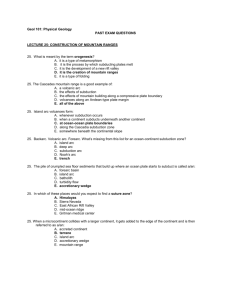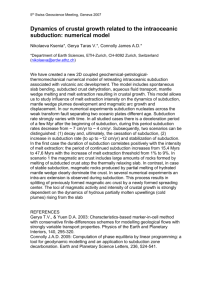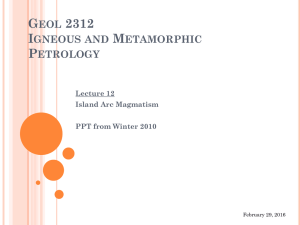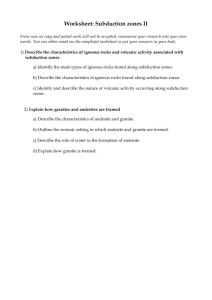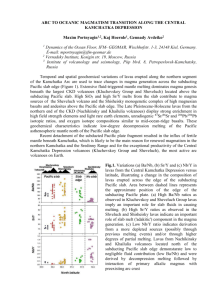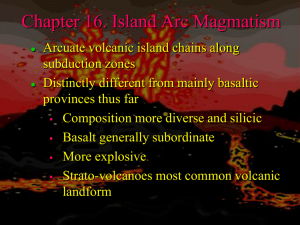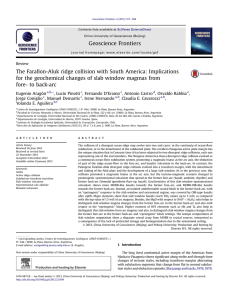24 Jan questions
advertisement
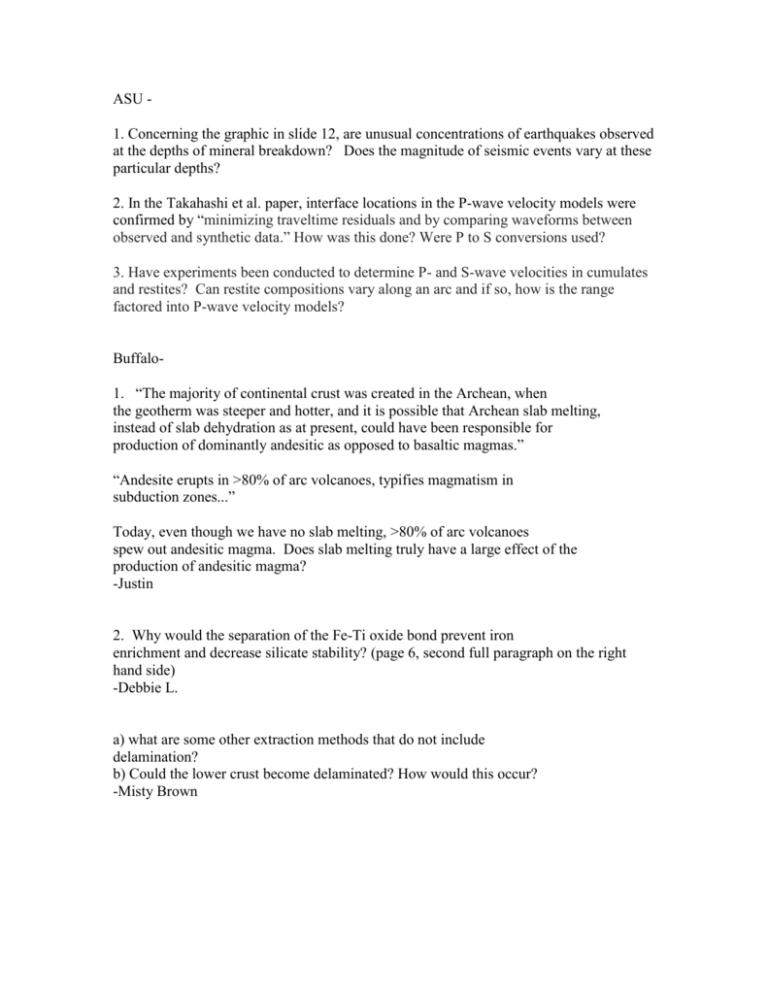
ASU 1. Concerning the graphic in slide 12, are unusual concentrations of earthquakes observed at the depths of mineral breakdown? Does the magnitude of seismic events vary at these particular depths? 2. In the Takahashi et al. paper, interface locations in the P-wave velocity models were confirmed by “minimizing traveltime residuals and by comparing waveforms between observed and synthetic data.” How was this done? Were P to S conversions used? 3. Have experiments been conducted to determine P- and S-wave velocities in cumulates and restites? Can restite compositions vary along an arc and if so, how is the range factored into P-wave velocity models? Buffalo1. “The majority of continental crust was created in the Archean, when the geotherm was steeper and hotter, and it is possible that Archean slab melting, instead of slab dehydration as at present, could have been responsible for production of dominantly andesitic as opposed to basaltic magmas.” “Andesite erupts in >80% of arc volcanoes, typifies magmatism in subduction zones...” Today, even though we have no slab melting, >80% of arc volcanoes spew out andesitic magma. Does slab melting truly have a large effect of the production of andesitic magma? -Justin 2. Why would the separation of the Fe-Ti oxide bond prevent iron enrichment and decrease silicate stability? (page 6, second full paragraph on the right hand side) -Debbie L. a) what are some other extraction methods that do not include delamination? b) Could the lower crust become delaminated? How would this occur? -Misty Brown McGill Questions: 1. Why is there magma mixing in subduction zones that produce andesites, whereas this is not seen in intraplate volcanism, where basalt and rhyolite do not mix? 2. Can slab be so steep that the two volcanic belts are indistinguishable? Likewise, can a slab be so shallowly dipping that it does not reach one or both of the boundaries? 3. How well-constrained is the 110/170 km markers [i.e. +/-]? 4. A process was mentioned where basalt from the mantle mixes with the base of the lithosphere to produce andesite, and ultimately forms the continental crust. How can this happen if the base of the crust is considered to be mafic? MTU1. What processes initiates delamination and how does the process unfold? 2. Can you explain the metasomatic reactions between oceanic lithosphere and overlying mantle wedge and how they related to the elevated levels of LIL elements? SFU1. Samples for geochem/petrographic analysis: what is the situation regarding deep source samples i.e. how deep are samples recovered from and how does this affect conjectures about really deep magmatic processes? A general question. 2. P-wave travel - what do the speed changes say about crustal/magmatic densities, are they sufficiently different to infer the changes indicated? Mariana paper. 3. Delamination - how certain is this concept as it implies distinct slab boundaries (think plywood) and given other concepts such as diffentiation, mixing, dehydration, the multitude of andesite producing processes, is this good teminology (why not use slab disaggregation)? Subduction Factory paper. 4. Explain/clarify "Anatexis" as it pertains to the production of different magma products in the subduction factory? Page 7, 1st column, Subduction Factory; page 205 Mariana paper. UNAM – 1. Is it possible to know intervals of time in which the mantle can modify their heterogeneity? (Enrique) 2. Is the geotherm in subduction zones (friction area) the same as the geotherm in other parts of the crust? Shouldn’t friction produce a significant increase of temperature, which will allow the melting of the slab? (Dolors) 3. According to the paper (Subduction Factory), it seems that arc magmatism and back arc magmatism have different geochemical signatures and both magmas are produced by different mechanisms. In a paper by Wiens and Smith (2003, Seismological Constrains on Structure and Flow Patterns Within the Mantle Wedge) about the research on the Tonga-Lau region, there is a suggestion that although the arc and back arc systems are separated at shallow levels, there may be some interchange between the magma systems at depths greater than 100km. This is an oceanic arc with a back-arc spreading centre. Is it possible for a continental arc to show the same behavior?, if not, why not? (Javier)



